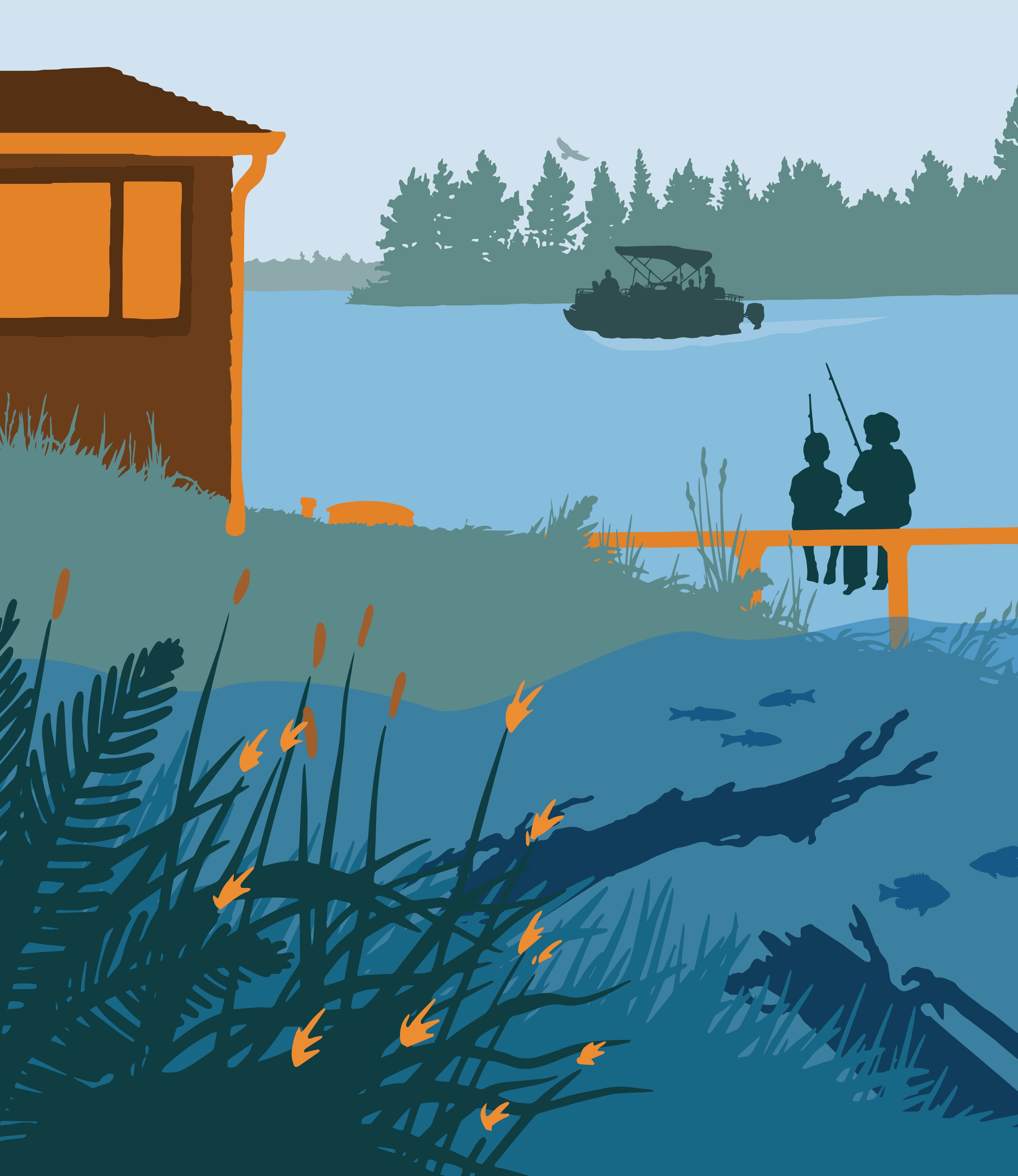Making a Difference on Tomahawk Lake
Lake Steward Initiative Goal
To instill in shoreland property owners a passion for managing their shoreland and recreating on the lake in a manner essential for preserving the Tomahawk Lake System water quality, the abundant aquatic plants, and maintaining critical habitats for bees, butterflies, birds, fish, and wildlife on the lake or within our shorelands.
Why Protect the Tomahawk Lake System?
Tomahawk Lake and Little Tomahawk Lake are designated Outstanding Resource Waters (ORW) by the Wisconsin Department of Natural Resources (WDNR). To receive the ORW designation, a lake must meet three criteria:
- provide outstanding recreational opportunities,
- support valuable fisheries and wildlife habitat,
- have good water quality.
Fewer than 1 percent of all Wisconsin lakes, rivers, and streams have received this designation. We must work as a community to preserve this incredible body of water we call home.
What Can Impact Our Water Quality?
Watershed
The watershed is the area of land around the lake whose water drains to the lake.
The Tomahawk Lake System has an incredibly small watershed. Because of the Tomahawk Lake Systems’ small watershed, our shoreland and lake use can significantly impact lake water quality, fisheries, and wildlife habitat.
Phosphorus
Phosphorus is a naturally occurring element and fertilizer. It is essential to all lakes’ aquatic plant growth at the correct concentrations. Preventing nuisance levels of weeds and algae requires keeping phosphorus on the land and out of our lake.
How does phosphorus enter Tomahawk Lake?
-
- Rain – The largest source of phosphorus in our lake comes directly from particles in the rain.
- Leaves raked or blown into the lake are like brewing phosphorus tea.
- Fertilizer – Only starter fertilizers are allowed to contain phosphorus; however, nitrogen is another element in fertilizer that stimulates aquatic plant growth.
- Soil Erosion – Soil also naturally contains phosphorus. Therefore, bare soil containing phosphorus-packed particles will likely wash into the lake.
Boat Waves and Propeller Wash
More powerful boats can cause shoreline erosion and adversely impact water vegetation and wildlife habitat areas. Preliminary results of a study by the University of Minnesota indicate.
-
- When operating under typical wake boat operation conditions, wake boats require distances over 500 feet from the shoreline/docks to decrease their wake wave characteristics to levels like a ski boat under typical planing conditions.
- When operating under typical wake boat operation conditions, wake boat propeller wash can scourer the lake bottom and uproot aquatic plants in up to 20 feet of water.
What Can You Personally Do?
- Embrace the goal of protecting the lake.
- Take The Pledge – Become A Lake Steward. It’s not someone else’s responsibility to preserve the health of our beloved Tomahawk Lake – it’s yours, and it’s mine. So, keep the water in Tomahawk Lake clean for generations to come.
- Follow the 10 simple steps. By taking The Pledge, you’re committing to take steps on your property and the water that makes a big difference on Tomahawk Lake.
And remember – together, small steps make a big difference to the lake’s health.
Please click on the steps below to learn more about each of them:



